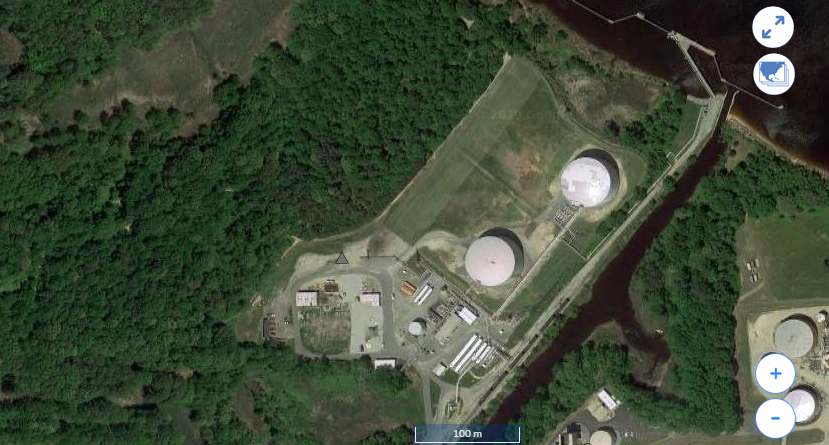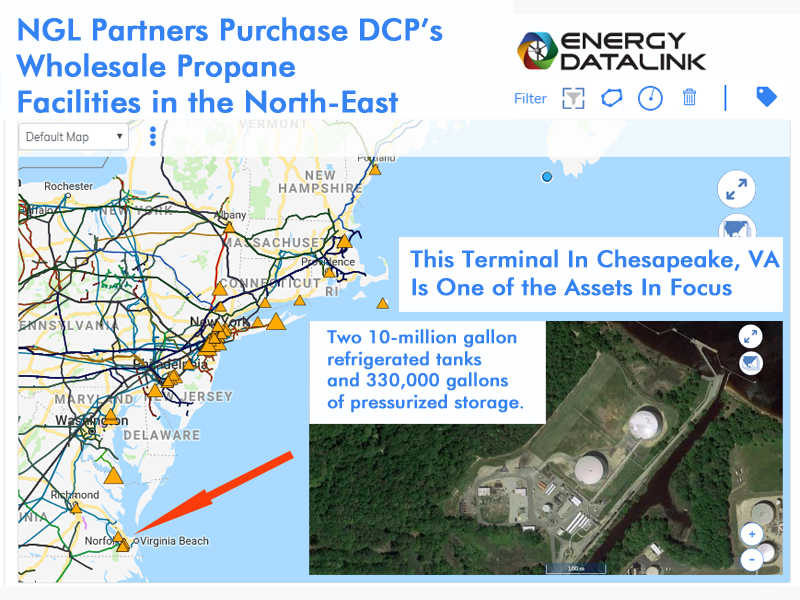Comprehensive Energy Data Intelligence
Information About Energy Companies, Their Assets, Market Deals, Industry Documents and More...
NGL Energy Partners Strengthens its Propane Asset Portfolio in the North-East
04/04/2019
DCP earlier announced it would sell its Gas Supply Resources (GSR) - Wholesale Propane Business - to NGL Energy Partners LP.

According to a purchase and sale agreement DCP conveys to NGL its wholesale propane business.
In general, the latter consisted of seven natural gas liquids terminals in the Eastern United States.
Under the terms of the agreement, NGL has acquired 100% ownership of five propane rail terminals operated by Gas Supply Resources, a subsidiary of DCP, and 50% ownership interest in a sixth propane rail terminal.
The agreement also includes an import/export terminal located in Chesapeake, Virginia, with the capability to load or unload ships from Handy-sized vessels up to Very Large Gas Carriers.
If you are looking for more information about energy companies, their assets, and energy deals, please, contact our sales office mapping@hartenergy.com, Tel. 619-349-4970 or SCHEDULE A DEMO to learn how Rextag can help you leverage energy data for your business.
How Big Is U.S. NG Pipeline Network?
![$data['article']['post_image_alt']](https://rextag.com/images/public/blog/pipelines.jpg)
See how U.S. NG pipeline network length compares to that of other countries.
2018. Expanding Beyond Lower 48: Mexico and Canada Are Markets That the Industry Keeps Pursuing
![$data['article']['post_image_alt']](https://rextag.com/images/public/blog/natural-gas-exports.jpg)
Growing U.S. natural gas production urges companies to invest in exports capacities. Reviewing paths to Mexican and Canadian markets and companies leading the way
![$data['article']['post_image_alt']](https://images2.rextag.com/public/blog/328_Blog_Why Are Oil Giants Backing Away from Green Energy Exxon Mobil, BP, Shell and more .jpg)
As world leaders gather at the COP29 climate summit, a surprising trend is emerging: some of the biggest oil companies are scaling back their renewable energy efforts. Why? The answer is simple—profits. Fossil fuels deliver higher returns than renewables, reshaping priorities across the energy industry.
![$data['article']['post_image_alt']](https://images2.rextag.com/public/blog/327_Blog_Oil Market Outlook A Year of Growth but Slower Than Before.jpg)
The global oil market is full of potential but also fraught with challenges. Demand and production are climbing to impressive levels, yet prices remain surprisingly low. What’s driving these mixed signals, and what role does the U.S. play?
![$data['article']['post_image_alt']](https://images2.rextag.com/public/blog/326_Blog_USA Estimated Annual Rail CO2 Emissions 2035.jpg)
Shell overturned a landmark court order demanding it cut emissions by nearly half. Is this a victory for Big Oil or just a delay in the climate accountability movement?